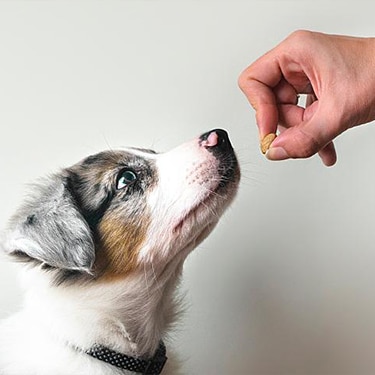
-
Find the right food for your petTake this quiz to see which food may be the best for your furry friend.Find the right food for your petTake this quiz to see which food may be the best for your furry friend.Featured products
 Adult Chicken & Barley Recipe Dog Food
Adult Chicken & Barley Recipe Dog FoodSupports lean muscle and beautiful coat for adult dogs
Shop Now Hill's Science Diet Adult Chicken & Beef Entrée Dog Food
Hill's Science Diet Adult Chicken & Beef Entrée Dog FoodChicken & Beef Entrée in a delicious loaf with complete & balanced nutrition to help keep adult dogs active and healthy
Shop Now Adult Large Breed Chicken & Barley Recipe Dog Food
Adult Large Breed Chicken & Barley Recipe Dog FoodSupports healthy joints, lean muscle, and beautiful coat for large breed dogs
Shop NowFeatured products Adult Tender No Corn, Wheat, Soy Chicken & Vegetables Stew Cat FoodShop Now
Adult Tender No Corn, Wheat, Soy Chicken & Vegetables Stew Cat FoodShop Now Adult Turkey & Liver Entrée Cat Food
Adult Turkey & Liver Entrée Cat FoodPrecisely balanced nutrition with the delicious taste of minced turkey & liver to help fuel the energy needs of cats during the prime of their life
Shop Now Senior Vitality Adult 7+ Tuna & Vegetables Stew
Senior Vitality Adult 7+ Tuna & Vegetables StewImproves Everyday Ability to Get Up & Go
Shop Now -
Dog
- Dog Tips & Articles
-
Health Category
- Weight
- Food & Environmental Sensitivities
- Urinary
- Digestive
- Joint
- Kidney
-
Life Stage
- Puppy Nutrition
- Adult Nutrition
- Senior Nutrition
Cat- Cat Tips & Articles
-
Health Category
- Weight
- Skin & Food Sensitivities
- Urinary
- Digestive
- Kidney
-
Life Stage
- Kitten Nutrition
- Adult Nutrition
Featured articles How to Properly Mix Wet & Dry Pet Foods
How to Properly Mix Wet & Dry Pet FoodsAn Orange cat eating from a bowl filled with mixed food
Read More What Is Littermate Syndrome? Pet Adoption Guide
What Is Littermate Syndrome? Pet Adoption GuideLearn more about littermate syndrome in dogs and cats and how to successfully navigate adoption and early socialization processes.
Read More The Science Behind Our Love for Pets
The Science Behind Our Love for PetsLearn the scientific reasons why we have such strong connections with our pets, and what science says about the love between humans and our furry friends.
Read More -


It's hard to stay active when cold weather sets in. But it's important to make sure your dog gets plenty of activity and exercise through the cold months to keep them fit, healthy and happy. Read on to learn how to keep dogs active in winter.
How Much Exercise Does My Dog Need?
The amount of exercise your dog needs depends on their size, breed, age, physical condition and energy level, says the American Kennel Club. Smaller breeds typically need less exercise than large dogs, and puppies generally need to exercise more often while seniors may need to move less. To find out how much exercise your dog should be getting, research their breed. If you're still not certain, ask your veterinarian, "How much exercise does my dog need?"
How to Keep Dogs Active in Winter
While cold temperatures and wet weather might make dogs of any age want to slow down, it's important to keep them active through the colder months so they don't pack on pounds or engage in problematic behaviors due to boredom. Here are some ideas to help your dog beat the winter blues and stay active.

1. Get Outside With Your Dog
Although you may not want to, one of the best ways to keep your dog active in winter is to keep up their daily walks. When the weather permits, take your dog outside to walk, play and explore. Just make sure they have the right gear, like booties to protect their paws from ice, salt and chemical ice melts. Small dogs and short-haired breeds should also wear coats to keep them from catching a chill.
2. Exercise Your Dog Indoors
On bad weather days, you can still get your dog up and moving inside the house. If you have a treadmill, you can train your dog how to safely walk on it — although if you have a large dog, you may need to purchase one that's specially designed for dogs. But treadmills aren't the only way to walk your pooch without leaving the house. If you have enough space, simply clear objects out of the way and do laps around the living room together. Or, if you have stairs and your dog isn't prone to joint or back problems, encourage them to follow you up and down the steps. Keep it fun with treats, encouragement and praise.


Tasty Tips
Young pets may need several visits in their first year for vaccinations. Adult pets generally benefit from annual check-ups, while senior or special-needs pets might require more frequent visits.
3. Engage Your Pup in Indoor Play
Vigorous play is another effective way to engage your pooch and help them burn calories. Games like fetch and tug-of-war are both excellent forms of exercise that are easy to do inside. Hiding treats and toys for your dog to find is another great way to get your pup up and moving while engaging their mind, natural instincts and scenting abilities.
4. Try Agility Training
 Consider enrolling your dog in an agility class if one is available in your area. Many agility courses are offered in indoor facilities, making them a perfect wintertime activity. You can also construct your own indoor agility course at home, making use of furniture cushions, ottomans, cardboard boxes, broom handles and other household items. Enlist the whole family to come up with creative obstacles and challenges for your dog to master.
Consider enrolling your dog in an agility class if one is available in your area. Many agility courses are offered in indoor facilities, making them a perfect wintertime activity. You can also construct your own indoor agility course at home, making use of furniture cushions, ottomans, cardboard boxes, broom handles and other household items. Enlist the whole family to come up with creative obstacles and challenges for your dog to master.
5. Keep Your Dog Occupied
While exercising and playing with your dog is a great way to bond, you may not always be available to actively engage with them. For times when you need to be somewhere else or doing something else, take advantage of treat-dispensing toys, snuffle mats and interactive puzzle toys to provide your pup with mental stimulation, give them an outlet for chewing and sniffing, and prevent them from becoming bored.
It might take more planning and effort on your part, but with a little creativity, your dog can stay just as active when a blizzard is raging outside as they can on a warm and sunny day. And keeping your dog moving and engaged through the winter will benefit their mental health as much as their physical health.


Jean Marie Bauhaus is a pet parent, pet blogger, and novelist from Tulsa, Oklahoma, where she usually writes under the supervision of a lapful of fur babies.
Related products

Supports healthy joints, lean muscle, and beautiful coat for large breed dogs

Chicken & Beef Entrée in a delicious loaf with complete & balanced nutrition to help keep adult dogs active and healthy

Chicken & Barley Entrée in a delicious loaf with great taste and precisely balanced nutrition to support 5 essential building blocks for lifelong health

Supports lean muscle and beautiful coat for adult dogs
Related articles

Can puppies have treats? Explore best practices for giving your puppy treats to ensure you're doing so in the healthiest way possible.

Wondering where can I buy a dog? Consider adoption and explore the pros and cons of adopting a dog from a breeder versus an animal shelter.

Learn how to help keep your dog's immune system in tip-top shape, including nutritional immune system support for dogs and other strategies.

Discover how the field of dog science is giving us more and more insights into the inner workings of our furry best friends.

Put your dog on a diet without them knowing
Our low calorie formula helps you control your dog's weight. It's packed with high-quality protein for building lean muscles, and made with purposeful ingredients for a flavorful, nutritious meal. Clinically proven antioxidants, Vitamin C+E, help promote a healthy immune system.
Put your dog on a diet without them knowing
Our low calorie formula helps you control your dog's weight. It's packed with high-quality protein for building lean muscles, and made with purposeful ingredients for a flavorful, nutritious meal. Clinically proven antioxidants, Vitamin C+E, help promote a healthy immune system.

